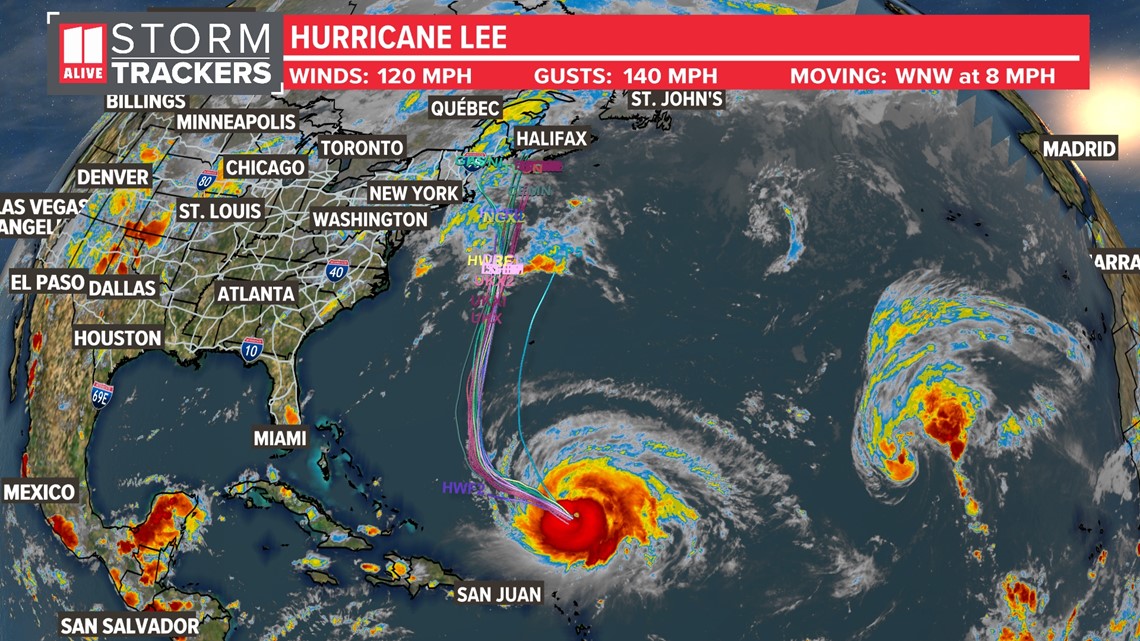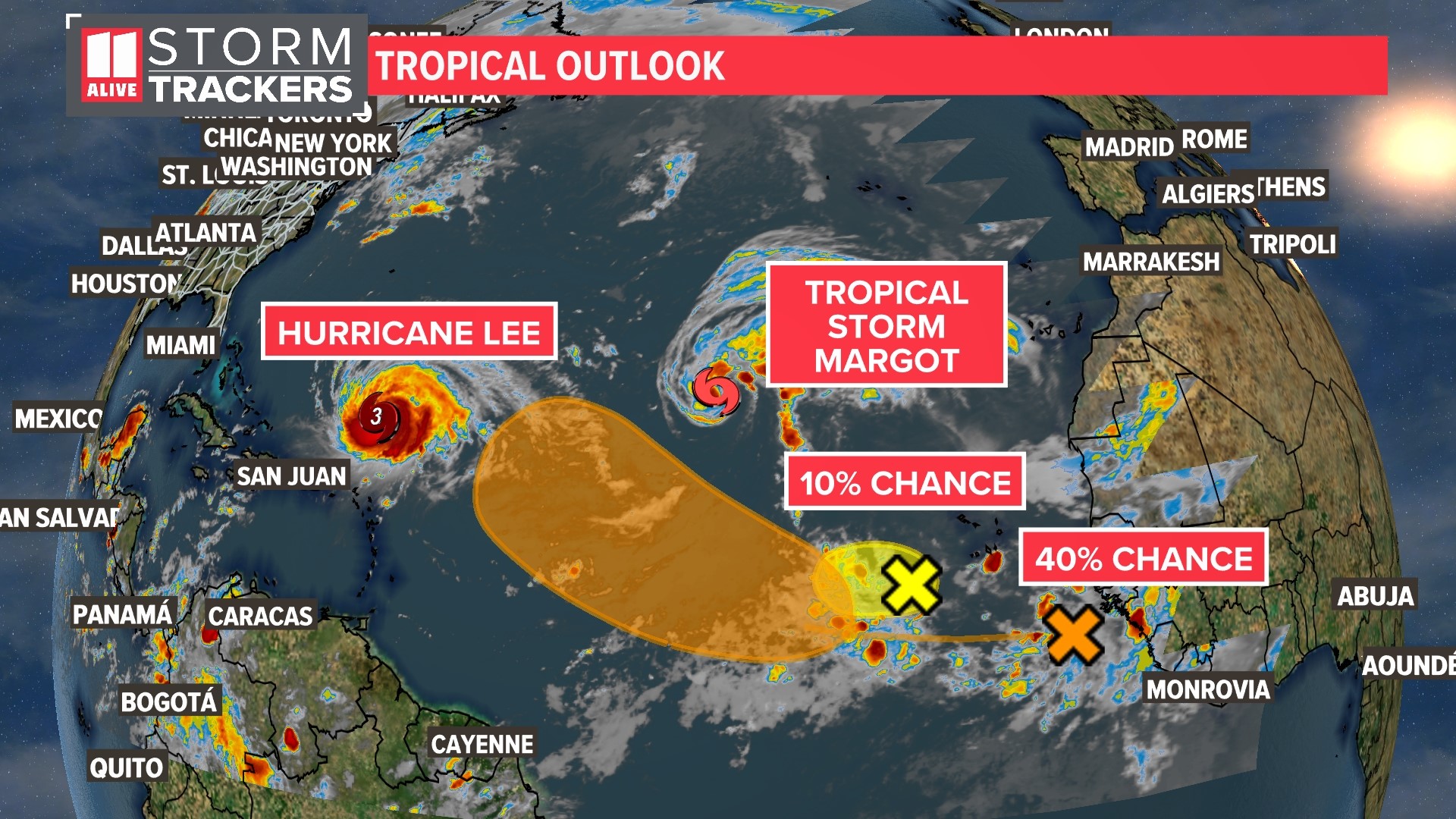ATLANTA — Sunday, Sept. 10, is hurricane season's official 'peak.' Historically, this is when we see the highest activity in the Atlantic basin. Today is when you will most likely find a tropical cyclone somewhere in the Atlantic basin.
If you look at the graph below showing tropical cyclone formation by month since 1850, September has the highest number... by a landslide! Mid-August through mid-October are our busiest months.

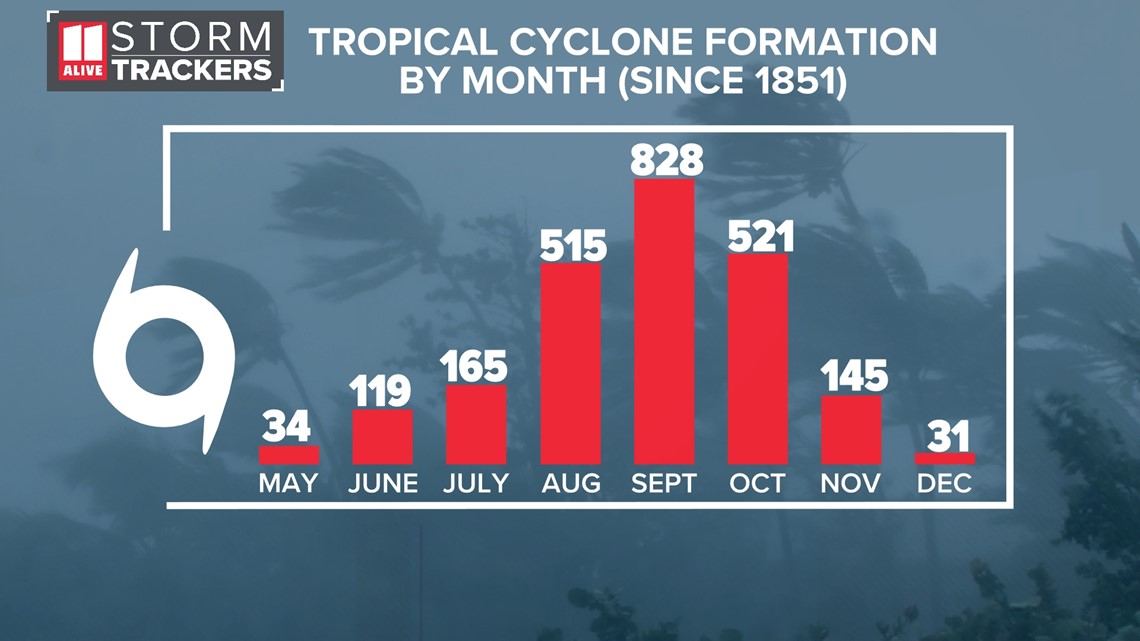
We are smack-dab in the middle of that, and the Atlantic has been active the last few weeks. Since mid-August, there have been nine named storms in the Atlantic. Three of those reached major hurricane status - Franklin, Idalia and Lee. In total, there have been 14 named systems in the Atlantic Basin in 2023.
Already, there have been two landfalling tropical systems to hit the U.S. mainland. Harold made landfall on Aug. 22 on South Padre Island, Texas. Then, just over a week later, Idalia made landfall with 125 mph maximum sustained winds near Keaton Beach, Florida. Idalia caused an estimated $12 to $20 billion worth of damage, according to a new preliminary estimate released by Moody's Analytics.

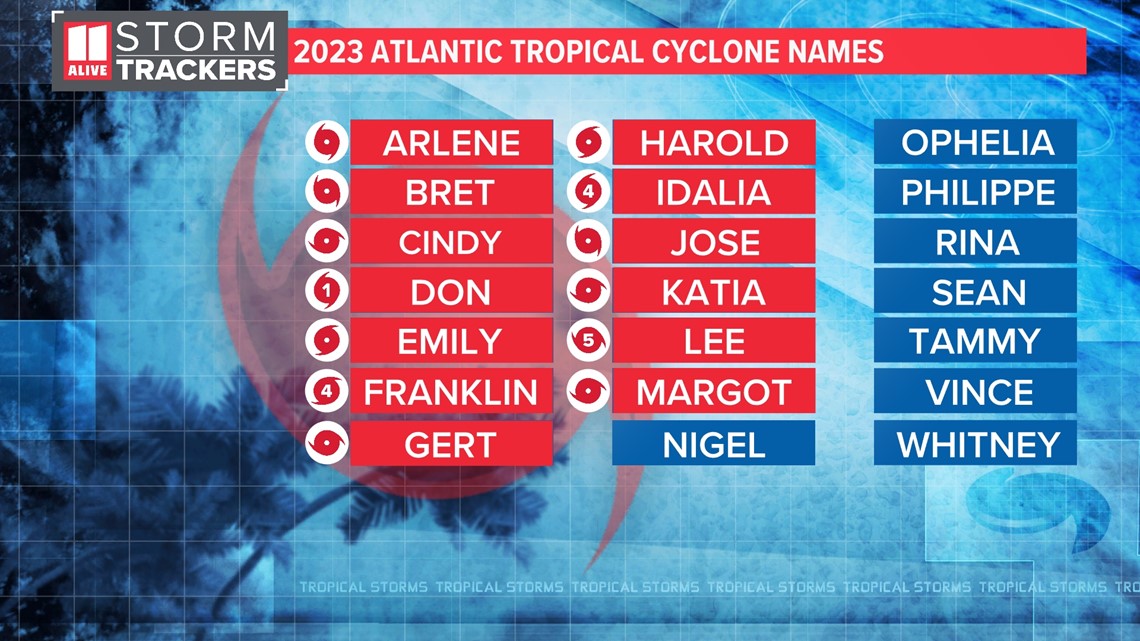
This season's major hurricanes all underwent a rapid intensification when a tropical cyclone's winds increased at least 35 mph in 24 hours. Most recently, Lee underwent 'Hyper-intensification,' with an 80-mph max wind increase in a day. This is becoming more common as our climate warms.
Lee and Margot have been our most recent named storms. Margot will remain a fish storm and pose no threats to land. But Lee remains one to watch closely.
After its hyper-intensification to a Category 5 storm last week, Lee battled wind shear over the weekend, taking it back down to a Cat 2, but on Sunday it strengthened back to a major Cat 3 hurricane.

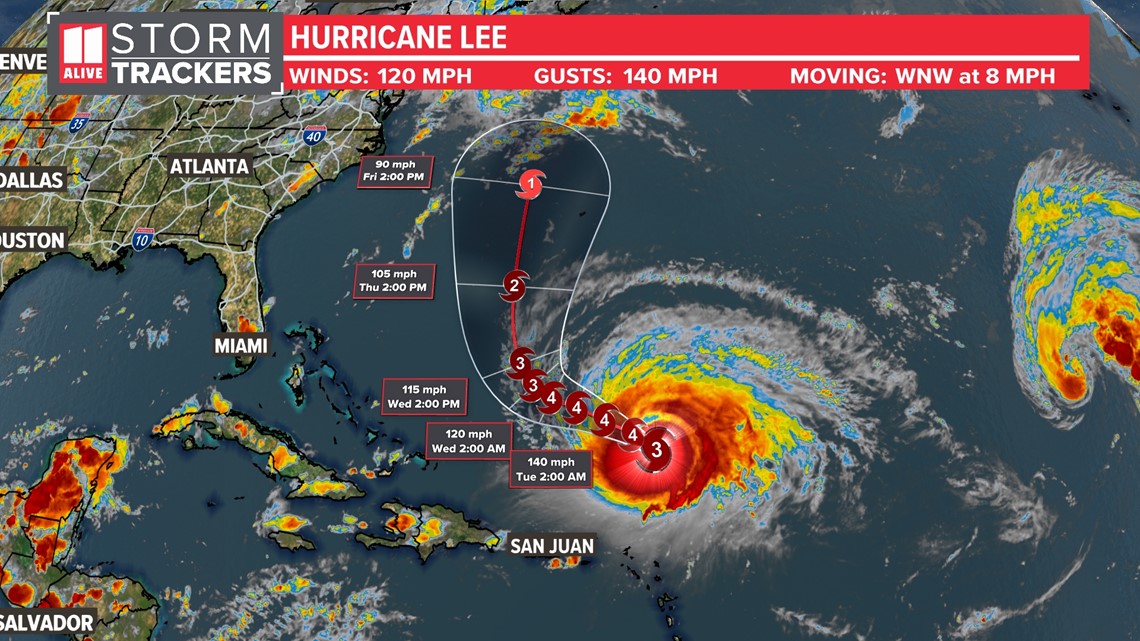
Although rip currents and swells will reach the southeast coast, the storm will not directly impact Georgia otherwise. An incoming dip in the jet stream and Bermuda High will help steer the storm later in the week northward. Nova Scotia, Newfoundland, and even eastern northern New England could still be at play for potential impacts.

